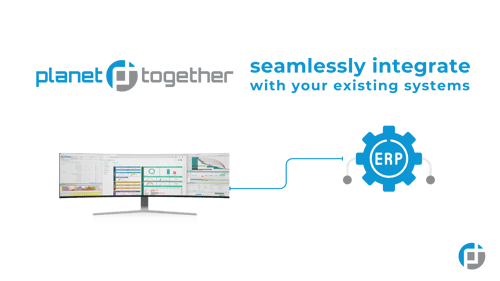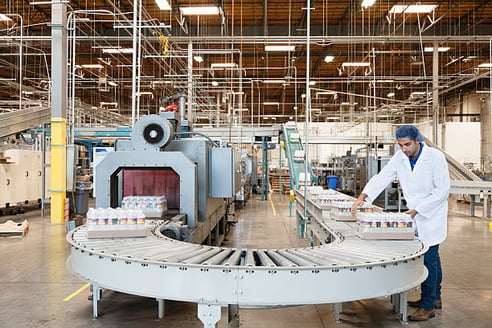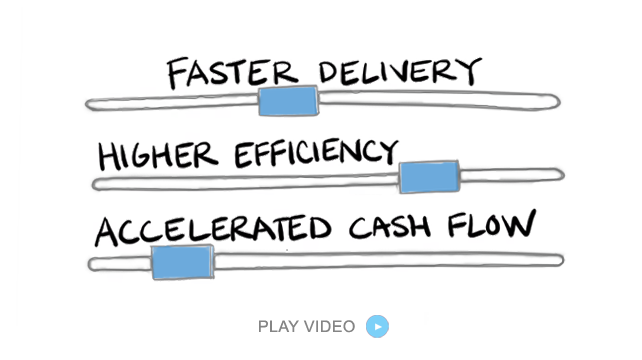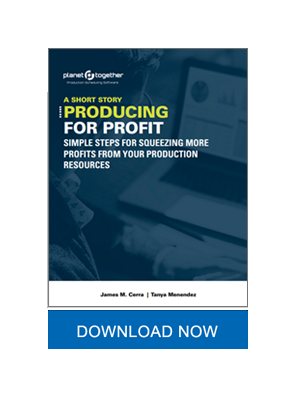Managing Through Tariff Uncertainty: Smart Strategies for Packaging Plant Success
For Plant Managers in packaging and containers manufacturing, tariffs have shifted from an occasional disruption to a persistent uncertainty. Sudden increases in material costs, volatile supplier relationships, and unpredictable lead times have made it more difficult than ever to ensure production efficiency and meet customer demand.
In this new environment, proactive strategies and agile operations are no longer optional — they are essential. Meeting demand despite tariff volatility requires a blend of operational flexibility, predictive analytics, and smart planning technologies. One key enabler is the integration of advanced planning and scheduling (APS) systems like PlanetTogether with your core enterprise systems such as SAP, Oracle, Microsoft, Kinaxis, or Aveva.
This blog will explore actionable strategies Plant Managers can use to maximize production output and meet demand amid tariff uncertainty.
Understanding the Impact of Tariffs on Packaging Manufacturing
Tariffs on raw materials such as plastics, aluminum, steel, and even paperboard can dramatically alter cost structures overnight. For packaging manufacturers, the challenges are magnified:
Material shortages drive production halts.
Price volatility forces constant cost adjustments.
Lead time fluctuations delay delivery schedules.
Supplier shifts require fast adaptation and onboarding.
In this environment, meeting customer deadlines and maintaining profitability requires unprecedented agility and insight across the entire production process.
![]()

Strategy 1: Build Flexibility into Your Production Planning
One of the first steps Plant Managers must take is building flexibility directly into production workflows. This means designing schedules that can adapt to changes in material availability, customer priorities, and supplier performance.
Advanced planning and scheduling (APS) platforms like PlanetTogether, when integrated with SAP, Oracle, Microsoft Dynamics, Kinaxis, or Aveva, enable real-time synchronization between procurement, production, and delivery. This integration allows Plant Managers to:
Quickly reroute production orders based on updated material availability.
Dynamically reallocate resources to higher-priority jobs.
Simulate alternative production scenarios before making final decisions.
By modeling and adjusting production plans dynamically, plants can minimize downtime, protect customer commitments, and absorb tariff shocks with greater ease.
Strategy 2: Enhance Supplier Visibility and Risk Management
Supply chain visibility is crucial when tariffs force changes in sourcing. Traditional procurement strategies that rely on a handful of suppliers become risky during trade disputes.
Through PlanetTogether's integration with ERP platforms like SAP and Oracle, Plant Managers can:
Track supplier performance across cost, quality, and delivery metrics.
Model the impact of supplier delays on production schedules.
Quickly pivot to alternative suppliers based on real-time data.
This level of supply chain transparency helps you make informed sourcing decisions — not just based on price, but on reliability, resilience, and overall impact on production timelines.
Strategy 3: Optimize Inventory to Balance Costs and Responsiveness
Carrying excess inventory may seem like an easy way to hedge against tariffs, but it’s costly and inefficient. Smart inventory strategies strike a balance between minimizing costs and ensuring material availability.
When PlanetTogether APS is integrated with Kinaxis or Microsoft Dynamics, you can:
Set optimal safety stock levels based on forecasted demand volatility.
Prioritize critical raw materials more likely to be tariff-affected.
Reduce inventory holding costs through synchronized production and procurement.
Real-time integration ensures that inventory data is fully aligned with production schedules, supplier shipments, and customer orders — allowing you to respond faster while keeping overhead low.
Strategy 4: Strengthen Demand Forecasting and Scenario Planning
Tariff-driven cost changes often ripple back to the customer side as well — altering demand patterns, shifting order priorities, and shortening lead times.
Integrating PlanetTogether with SAP IBP, Kinaxis RapidResponse, or Oracle SCM gives Plant Managers access to:
Predictive analytics that forecast demand based on real-world variables.
What-if scenario planning to evaluate different tariff outcomes.
Dynamic scheduling that reacts to customer order changes instantly.
With accurate forecasts and agile response capabilities, you can anticipate demand swings and realign production without missing critical delivery windows.
Strategy 5: Invest in Digital Twin and Production Simulation
A growing number of leading packaging manufacturers are using digital twin technology — creating virtual replicas of their plants to test changes before implementing them on the shop floor.
Through integration with Aveva’s manufacturing execution systems and PlanetTogether, Plant Managers can:
Run production simulations to optimize schedules under new tariff conditions.
Test capacity expansion models before investing in new lines or shifts.
Identify bottlenecks and fine-tune resource utilization.
By using simulations, you can move from reactive firefighting to proactive optimization, ensuring you are always ready to meet market demand, no matter how global trade policies evolve.

The Role of Integration: Why PlanetTogether + SAP, Oracle, Microsoft, Kinaxis, or Aveva Matters
In an environment of continuous trade volatility, manual coordination across systems is simply too slow. Integrating PlanetTogether APS with ERP (SAP, Oracle, Microsoft), SCM (Kinaxis), or MES (Aveva) platforms creates a closed-loop, data-driven operation that:
Accelerates decision-making with real-time data visibility.
Improves collaboration between procurement, production, and sales.
Boosts plant resilience by enabling rapid adjustments.
Enhances profitability by minimizing disruptions and wasted resources.
It’s not just about having data — it’s about using that data to orchestrate every move of your plant intelligently and quickly.
Key Takeaways for Plant Managers: Turning Strategy into Action
Successfully navigating tariff uncertainty isn’t about any one solution — it's about creating a systematic approach to flexibility, visibility, and execution. Here’s how Plant Managers in packaging manufacturing can act today:
Conduct a Tariff Impact Assessment
Begin by evaluating your current product lines and supplier dependencies. Identify which materials are most exposed to tariff risk and estimate how different tariff scenarios could impact costs, lead times, and production capacity.
Prioritize Strategic Supplier Relationships
Strengthen partnerships with multiple suppliers across different regions. Through integrated supplier management using PlanetTogether and ERP systems like SAP or Oracle, you can build multi-source strategies and decrease reliance on any one geography.
Digitally Enable Your Production Planning
Implement APS platforms like PlanetTogether with direct integration to your core business systems. Digital planning allows you to automate and adjust production in response to real-time changes — something spreadsheets and manual methods simply can’t match anymore.
Build Inventory Buffer for Critical Materials
Use dynamic safety stock planning (enabled through Microsoft Dynamics or Kinaxis integrations) to ensure that your plant has just enough buffer to absorb disruptions, without tying up unnecessary working capital.
Train Cross-Functional Teams for Agility
Ensure that your production, procurement, sales, and logistics teams are aligned and trained to adapt quickly. Shared visibility and collaborative tools from integrations between PlanetTogether and enterprise systems foster faster, more confident decision-making across teams.
Tariffs aren’t going away anytime soon. In fact, global manufacturing will likely face increasing protectionism, trade wars, and regulatory complexity in the years ahead.
As a Plant Manager, you sit at the critical intersection of production capability, supply chain strategy, and customer satisfaction. In an era where external factors like tariffs can reshape industries overnight, the plants that succeed will be those who lead digital transformation inside their operations — not those who wait for stability to return.
For Plant Managers in packaging and container manufacturing, survival and growth will depend on:
Agility in production planning.
Visibility into supplier performance.
Inventory optimization.
Data-driven forecasting.
Smart digital investments.
Take control of uncertainty.
Maximize operational performance.
Meet demand, no matter the challenges ahead.
The future belongs to those who can plan for the unexpected. Are you ready to take your manufacturing operations to the next level? Contact us today to learn more about how PlanetTogether can help you achieve your goals and drive success in your industry.
Topics: PlanetTogether Software, Integrating PlanetTogether, Optimize Inventory Levels, Scenario Planning, Packaging Manufacturing, Build Flexibility, Enhance Supplier Visibility and Risk Management, Strengthen Demand Forecasting, Conduct a Tariff Impact Assessment





















LEAVE A COMMENT